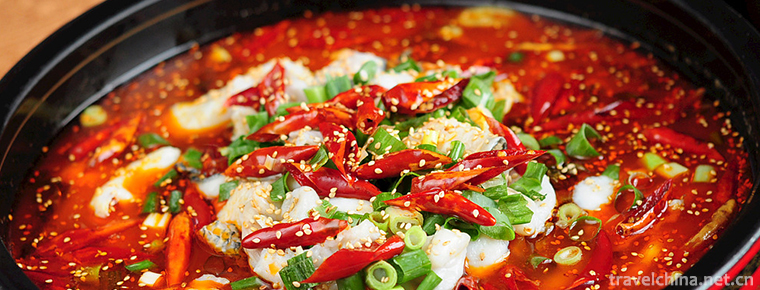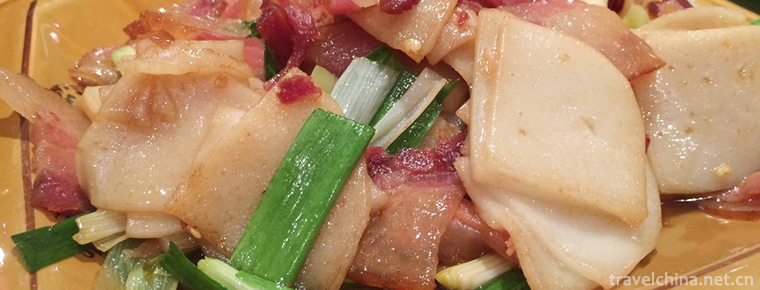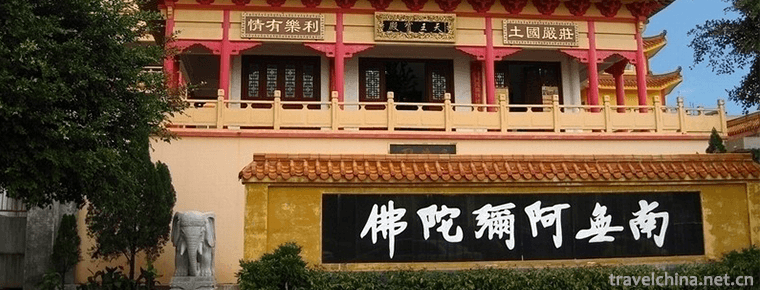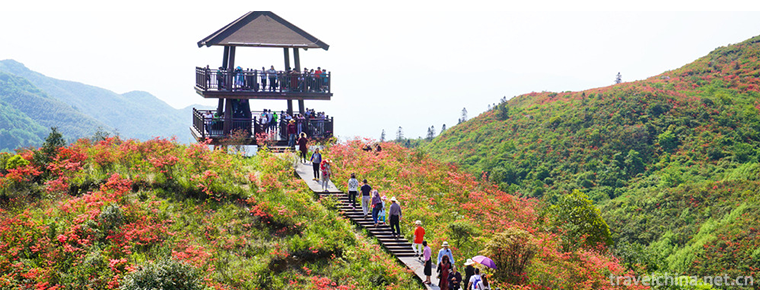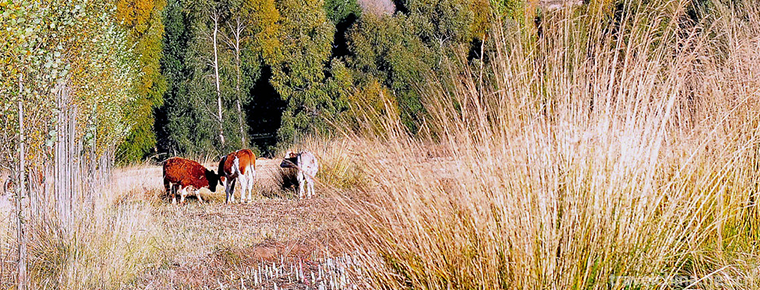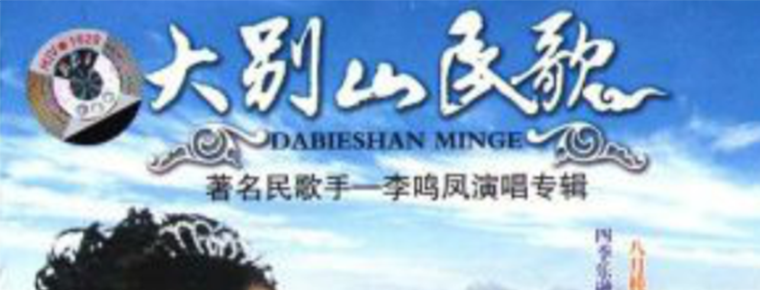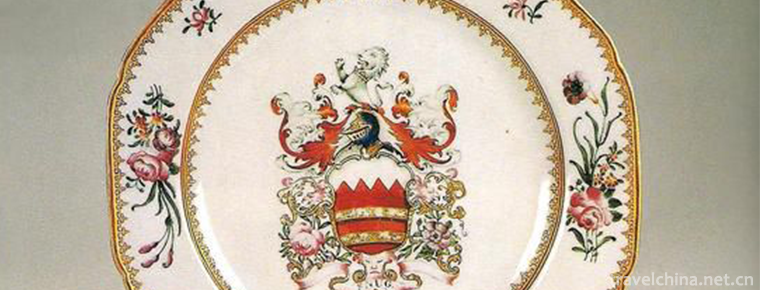Tibetan New Year
Tibetan New Year
Tibetan calendar year is the traditional festival of the Tibetan people. Bhutan and Mongolia, which are deeply influenced by Tibetan culture, also celebrate the Tibetan New Year . However, there are differences between the calculation methods of Tibetan calendar year and the Spring Festival of the lunar calendar. The Tibetan New Year in 2010 is February 14, and the Spring Festival in the Chinese calendar is a day. The Tibetan New Year in 2009 is February 25 and the Spring Festival is January 26, so the time is one month later than the Spring Festival. The Tibetan New Year and the Spring Festival in 2008 and 2015 are the same day.
From the relevant literature and historical data and research results at home and abroad, Tibetans had calendar before the establishment of the Tubo Dynasty. From the ancient Tibetan phenological calendar, the main popular calendars before the unification of the Tibetan Plateau were the lunar calendar and the solar calendar. The Monthly Calendar of Shannan Yala Shampoo Textile Old Woman is basically a solar calendar timed by the sun, the moon and the celestial phenomena. The time period of Jutian (7 days for a week) mentioned above is very important to Tibetan astronomical calendar and is also the most important data in Tibetan calendar. In addition to the lunar calendar, there was also a calendar deduction algorithm. The "Xiangxiong Old Man Population Algorithms" is a typical solar calendar, which totals 365 days a year. Of course, it is still in the natural calendar stage .
On May 23, 2011, the Tibetan calendar year was approved by the State Council to be included in the third batch of national intangible cultural heritage list.
New Year's Change
Old style New Year Celebration
Before the Tang Dynasty, the Tibetan people used wheat ripening as their New Year's Day, which was the same as that of the Han people in ancient times. The Oracle Bone Inscription of the Chinese character "Nian" is the image of a person carrying mature foliage, indicating the maturity of crops, that is, "Nian Cheng". Therefore, the original New Year celebration is to celebrate the harvest. The so-called "maturity" in ancient times refers to this. Therefore, the word "Nian" was put into the gramineous section in ancient Chinese calligraphy. Until now, the aquarium still retains the custom of the ancient Chinese New Year, "New Year begins after the year is ripe.
From New Year's Day to New Year's Day
Since cereals are usually ripe one year at a time, the number of dates of "year" and "year" has the same cycle. Ancient Central Plains and Tibetans were the original meaning of the Spring Festival (some of the cultural genes of the Sino-Tibetan language family are the same), and later became overage (or "Spring Festival").
Origin of New Year's Day
Before the Tang Dynasty, the Tibetan people took Maishu as their New Year's Day. Later, due to the entry of the Tang imperial woman Wencheng, Princess Wencheng, Tang Fan began to communicate more closely. With the exchange of Central Plains culture and plateau culture, many Central Plains culture gradually spread to Tibet, including the calendar. Later, the Tibetan custom of making wheat ripe for the New Year changed to the same age as that of the Han nationality (age is about solar terms in the cycle of the relationship between the sun and the earth, not "maturity"), until today.
Festival Customs
General situation
The determination of the Tibetan calendar year is closely related to the use of the Tibetan calendar. The official use of the Tibetan calendar year began more than 950 years ago, that is, the Ding Mao year of the Chinese calendar (A.D. 1027). Since then, the use of Tibetan calendar has been followed.
Tibetan calendar year is a traditional Tibetan festival. Every year, the Tibetan calendar begins on the first day of the first lunar month, ranging from three to five days. At the beginning of December, people begin to prepare new year's goods. Every household soaks barley seeds in a basin to cultivate green seedlings. In mid-December, each family successively used butter and white-faced fried baboons (Kasai). There are many kinds of baboons, such as ear-shaped "ancient", long "Naxia", round, "Bru" and so on. Close to the New Year, each family will prepare a rectangular bamboo plain Qima grain dough with colorful drawings. The dough is filled with bamboo cake, fried wheat grain, ginseng fruit and other foods, which are mixed with butter, and painted with barley ears, cockscombs and colored flower boards made of butter. And prepare a sheep's head with color butter sculpture. All of these have the meaning of celebrating a bumper harvest and wishing good weather and prosperity for people and animals in the coming year. Two days before New Year's Eve, the house was cleaned, new card mats were placed and New Year's pictures were pasted. Before dinner, on the central wall of the kitchen room, dry flour was sprinkled with "Eight Auspicious Ways". The doors are painted with lime powder, which symbolizes eternal auspiciousness. The symbols indicate that life and food are plentiful and safe. On that night, the whole family was still busy till midnight. This evening, every family will have dough Tuba (Gutu). In dough Tuba, we specially make several dough with different sandwiches, such as stone, pepper, charcoal, wool and so on. Each sandwich has a saying. Stone indicates hard heart, charcoal indicates black heart, pepper indicates a knife, wool indicates soft heart. People who eat these sandwiches immediately spit out and laugh to help the New Year's Eve. It's a kind of food and entertainment. Whoever eats anything must spit it out on the spot. This often causes laughter and adds to the festival's joyful atmosphere. On the eve of New Year's Eve, families put various kinds of food in front of Buddha statues in order to make food abundant and abundant during the festival.
On the first day of the first day of the new year, we put the green seedlings, oil gourds, sheep's heads, grain fights and so on on the tea table of the Buddha's niche, wishing you a rich life and food in the new year. At the beginning of the New Year, when the day was not bright, the housewife would carry back the "auspicious water" from the river. Then she would wake up the whole family and sit down in the ranks of generations. The elders would bring five grains of grains to each of them and throw them to heaven to show their sacrifice to God. Then she would grab a few grabs and put them into her mouth in turn. From then on, the elders congratulated "Zhaxidele" (good luck), and the younger generations congratulated "Zhaxidele Pengsongcuo" (good luck, good virtue). After the ceremony, they ate oatmeal, earthen bread and ginseng fruit cooked in butter, and then reciprocated highland barley wine. On the Eleventh day, sweeping the floor is generally forbidden, unlucky words are forbidden, and visitors are not allowed to visit each other.
Friends and relatives of the second grade of junior high school visit each other to celebrate the New Year and give each other Hada. Men and women, old and young, dressed in festival costumes, met and talked to each other about "Zahidler" and "Happy Festival", which lasted for three or five days. During the Tibetan New Year, in the square or open grassland, people circle around to dance pot village dance, string dance, accompanied by six-string piano, cymbals, gongs and other instruments, hand in hand, people step on the ground for the festival, singing and harmony, children set off firecrackers, the whole region immersed in a happy, festive and peaceful Festival atmosphere. Singing Tibetan opera in urban and rural areas, dancing Guozhuang and chord dance. In pastoral areas, herdsmen light bonfires and sing and dance all night long. Civilians also engage in wrestling, throwing, tug-of-war, horse racing, archery and other activities.
Preparing for Chema
Preparations for the New Year usually begin in early December of the previous year. Apart from purchasing food, drink and play, every household has to make a five-grain bucket named "Chema". It is a bamboo basket with fried wheat grains and butter on the left and right sides of the wooden box painted with colorful patterns, with green spikes and butter-shaped colored flowers on it. Also soak a bowl of barley seeds in water to grow one or two inches of green seedlings in the New Year. "Chema" and wheat seedlings are enshrined in the middle of the case, praying for a bumper harvest next year.
Making "Casey"
Near the festival, men are busy cleaning the courtyard, while women are meticulously making "kasai", a kind of pasta fried with butter, divided into ear, butterfly, bar, square, round and other shapes, painted, wrapped in sugar. It is not only a work of art to decorate the god's case, but also a delicacy to entertain guests. The variety and color of "Kasai" often symbolizes the heroine's diligence, wisdom and enthusiasm, which is especially noticeable in festivals.
。
Origin of Tibetan calendar:
During the Tubo Dynasty, the knowledge of zodiac and Five-element deduction was introduced from the Han Dynasty. On the basis of the ancient natural lunar calendar, the natural solar calendar and the seven-membered calendar, it developed into a unique Yin-Yang calendar. "Bailiu" said that although the Tibetan calendar was relatively simple in this period, it had formed a unique method of keeping a diary, keeping a month and keeping a year. Such as the zodiac, five elements. The chronological method combined Yin and Yang was recorded on the "Tang-Tuo Alliance Stele" in 842. Later, with the extinction of Hindu Buddhism, many Buddhists were persecuted and Yongzhong scriptures were destroyed. The knowledge of ancient astronomy and calendar of Tubo, which was preserved in the culture of this religion, was lost. It is difficult for modern people to understand the calendar at that time.
Nevertheless, people can trace back to the folk knowledge of astronomy and calendar, as well as the remaining valuable documents (such as the Dunhuang Tibetan volumes P.T.76, 1, 82, 83, 85 and P.T.55, 80, China) in the Library of Paris) to see a glimpse of the Tibetan calendar. Tibetan astronomical calendars and non-governmental intellectuals affirm such figures: one is 7 points, the other is 4 fixed points. This should have been finalized in the Tibetan calendar. It is precisely because of the 4 7 monthly records that lead to the unique leap and difference days in Tibetan calendar in the future; the 4-minute method is used to divide the four points when calculating the sun, i.e. spring equinox, summer solstice, autumn equinox and winter solstice, which are divided into four seasons according to plateau climate change. According to the tradition of this religion, there was a method of estimating the 60th anniversary of the Jordanian Period in the Tubo period. All these indicate that the Tibetan calendar in the Tubo period is relatively complete.
Since the introduction of the Calendar of Shilun Jing from India in the 11th century, although various methods of dating, setting the first year and setting the leap month still exist in Tibet, the calculation of Tibetan astronomical calendar is basically based on the calendar of Shilun Jing. Because Tibetan chronological calendar is not only based on the ancient Tibetan calendar, but also constantly absorbs useful content from the Han region to adjust and improve it, it is not entirely equivalent to Indian chronological calendar .
Gamopama Calendar Algorithms
According to legend, the Tibetan calendar began about 100 BC. According to the round and waning of the moon, a man named Gamopama in the former Yalong area of Tibet preliminarily calculated the date, month and year. Later, it was called the Gamopama Calendar algorithm. Later, agriculture in Yalong developed gradually. When the crops were ripe and harvested once, farmers would hold a gathering to celebrate the harvest. Year after year, this activity gradually formed a regular celebration, which was later designated as the "wheat ripening as the first year of the year" phenomena. Until now, people in Linzhi region of Tibet celebrate festivals after the harvest of wheat in autumn. We can also see the continuation and influence of this phenological calendar.
Calendar origin
In 624 AD, there was a calendar epoch in the snow area called "Mei, Kazakhstan and Gatao" (meaning fire, air and sea) in Tibetan. This calendar is based on the zodiac years of monkeys and chickens in the same order as the twelve Branches of the earth. It is a cycle every twelve years and has four seasons of spring, summer, autumn and winter every year. At the beginning of the 9th century, Tibetan astronomers Sanjay Yixi and Kanzambisan created the Tibetan traditional calendar on the basis of the Xia calendar in the mainland, the Indian chronological calendar and the ancient Kamopama calendar. It uses five elements of gold, wood, water, fire, earth and twelve zodiac animals to calculate the year, month and day. The same deduction algorithm as the ten-day-work is formed every 60 years for a week. In 1027, the Sutra of Shilun in India was translated into Tibetan and introduced to Tibet. This year is the year of the Yinhuo Rabbit. In Tibetan history, this year has been designated as the first year of the first 60-year cycle era. That is to say, the so-called Tibetan New Year begins from this year. In Tibetan language, 1027 is called "the first circle" which means the year of birth.
The so-called "Shengsheng" refers to the last year in the Sutra of Shilun, the last year of the reign of King Shangbala's biography, 1026. Therefore, the following year is designated as the "Shengsheng year".
Tibetan calendar has a history of more than 970 years. It and the Spring Festival are basically in the same month, just a few days away. So the monks of Tar Monastery celebrate the Tibetan calendar year as well as the Spring Festival. From the mid-December of the Tibetan calendar, we cleaned the palace and our monasteries, prepared gifts for Buddhas, and made our own fried fruits, Kalouma (also known as mat braids) and flower rolls. On the evening of the 24th, the Kitchen God was sacrificed. Like the Han calendar, the Tibetan calendar also designates the first month as Mengchun and the first month as the beginning of the New Year.
Folk customs
Decoration and Cleaning
The Tibetan people celebrate the New Year's Festival, which is quite different from the Han Spring Festival. As soon as December comes into the lunar calendar, households begin to make New Year's reserve. In the first few days of the New Year, young and old men shave their hair and women shave their braids, regardless of farming or pastoral areas. If a man has long hair for the Spring Festival and a woman does not wash her hair and braid for the Spring Festival, it means that her family or heart is sad and she has no intention of dressing up. Washing and dressing up is a sign of good luck for the coming year. Since December 28, it is necessary to choose auspicious days for cleaning the ceiling and chimney, such as 3, 5, 7, 9, etc.
Related preparation
Before the New Year, the men in the villages mounted on horseback to the "holy mountain" or the mountain as a clean place, cut down cypress branches, and came back home, which was the main material for "simmering mulberries" to the gods every day during the Spring Festival. Women brew barley wine or liquor at home, fry various kinds of oils, make butter and cream cakes, etc. By the afternoon of December 30, households will have to clear the garbage and weeds and transport them to their fields in order to light them on the first morning of the New Year. At home, women should prepare matches for the morning of the first day of the Lunar New Year and use them as soon as possible in order to get everything going at the beginning of the new year.
Similarity
In many areas of the prefecture, due to its proximity to the farming areas of the Han nationality, influenced by it, New Year pictures and couplets are pasted on the doors of houses. However, the content of New Year pictures is mainly Tibetan as auspicious things, lions, dragons, tigers, etc. The couplets are usually written in Tibetan scripts.
Custom of "Gutu"
December 29 enters New Year's Eve. On this day, we need to replace the window doors with new curtains, insert new banners on the roof, and paint cross symbols and other auspicious patterns with white powder in front of the door, beams and kitchen to create a festive atmosphere. At night, the whole family sits around and eats a traditional "Gutu" meal, similar to the reunion dinner of the Han New Year. "Gutu" is a porridge cooked with flour towers, mutton and ginseng fruit. Before cooking, housewives quietly wrap stones, wool, peppers, charcoal and coins in some towers. Whoever eats these things must spit them out in public, which augurs the fate and heart of the person. Stone represents heartlessness, wool represents heartlessness, charcoal represents heartlessness, pepper represents mouth, and coins indicate prosperity. So everyone talked to each other, laughed, and set off a happy climax.
Drive out a demon
Then, the whole family kneaded a magic girl and two bowls, and poured the leftover "gutu" and bones into the bowl made by Kaiba. A woman runs outdoors with a devil and scraps of food. A man lights a hay and reads, "The devil comes out, the devil comes out!" Let the hay burn to ashes with the devil and the leftovers. At the same time, the children set off firecrackers to drive away the devil and usher in the auspicious New Year.
custom
Among the many festivals in Tibet, the Tibetan New Year is widely valued by the masses. Understanding Tibetan folk customs related to the New Year celebration can reveal people's special feelings and attention to the New Year. For example, when farmers harvest, they leave the first cut barley as a sacrifice to the gods in celebration of the New Year, and the pastoralists leave the butter of the cow's head milk, which gives birth to calves, as a gift to the Bodhisattva for the New Year. Men begin to prepare for the New Year when they finish playing, painting every house white and beautiful. At this time, relatives, friends and neighbors always come to bless them with good wine. Women choose a sunny and windy day to wash their hand-woven bathrooms by the river. Relatives, friends and neighbors should also hold tea and wine, wishing the owner to wear new clothes in the New Year. ... There are so many such folk activities to celebrate the New Year that they cannot be explained here. Every year, the 29th of December is the last and busiest activity to celebrate the New Year.
Tsuina Festival
Tibetan folk traditions and customs, the Tibetan calendar every year on December 29 to hold the drive "ghost" ceremony. (The Xigaze area is on November 29 of the Tibetan calendar, and the Linzhi area is on September 30 of the Tibetan calendar to exorcise ghosts.) All religious monasteries, including all sects, are held on the same day. According to the ancient tradition, people usually hold this ceremony after dinner. People call it Guduo, which means 29 ghosts. It originated from the folk religion of primitive totem worship. It has a deep-rooted influence on the Tibetan people. In the era of high-tech in contemporary society, this traditional custom has been diluted or simplified in many aspects, but its main content still exists in the folk. Although these ceremonies were held by various religious sects, they all borrowed from the folk "Guduo" in form, but their contents were mostly integrated with the religious thoughts of their respective sects. They used various vajrayans to perform dances and hold exorcism ceremonies to worship food. The Tibetan language is called "Goodall", which means Ganjiuduoma. The activities were held during the day.
The annual folk "Guduo" exorcism ceremony, people have to prepare a very interesting and very special dinner. In the past, because of the natural environment and economic conditions in Tibet, Tibetan dinners were mostly made of porridge or soup noodles made from barley and bamboo barley, which are collectively called "Tuba" in Tibetan. The dinner for sending ghosts is called "Gutu" because it contains nine kinds of food, such as cereal, peas, knots, ginseng fruit, radish and so on. In order to make this special dinner have a strong festive atmosphere, we also choose different symbolic items, such as some items symbolizing auspiciousness, some symbolizing personality and personality characteristics. These predictive foods are wrapped in dough and cooked in pots with knots to make delicious pasta. Before eating Gutu, each person loses a ball of wet noodles in his hand and rubs each part of himself tightly. He also reads in his mouth, "Ah! In the twelve months and three hundred and sixty days of the new year, I invite you to bring all the miseries and illnesses in my heart and body, as well as all the evil spirits and gloom to the other side of the sea. Then the dough, which was full of illness and gloom, was put into the broken pot with the image of ghost. After all this, the housewife personally serves dinner for everyone. When someone eats food in the shape of sun, moon, books and Buddha statues, people put down their bowls, raise their wine glasses and sing a toast to them.
Auspicious blessings; when someone eats food wrapped with wool, stone, fire and dairy products, people comment on it one after another, praising their character as soft as wool, his will as hard as rock, treating others as warm as fire, their soul as pure as milk; eating food wrapped with salt, pepper, chinaware, crooked neck shape and charcoal, etc. When they work, people advise them not to work as heavy as salt, not as sharp as chili pepper, not as lazy as porcelains, not to work crooked neck, not too black heart, and require the above people to use song to express their prevention; if young girls eat food like backcountry children, they coax the hall and remind them. They should pay attention to keeping their purity; there is a kind of food called "Smartnut" full of thorns, who eats it to show that the person can not get along well with others everywhere, so they should be punished for drinking and let him learn to bark donkeys, dogs and so on. Finally, everyone pours the remaining "Gutu" from the bowl into the broken pot to send ghosts. They also say, "Today, after you have enough to eat and drink, let you take away all the evil spirits of your family and so on. You must never go back to that far place." The family ended the special dinner in a festive atmosphere.
After dinner, an exorcism ceremony was held. A man took up a broken pot containing ghosts and walked in front of him. The man behind him held a torch and shouted "Get out, get out!" Drive the ghosts to the crossroads, and then people go back to their closed doors and sing a hymn together.
The gate is the golden one.
The white "perfume" is the cloud in the sky.
How beautiful the threshold of Songershi is,
The door of the tree is very bright.
The auspicious gate faces east.
The sun and moon shine all over the house.
Recruiting wealth and attracting good fortune are all in the hall.
Fortune rises high and high.
We drive away the ghosts from our homes.
All evil spirits are extinct.
Cleanly back,
Open the door for us, please.
When the door opened, a fire had already started in the threshold. Everyone who came in from outside had to cross the fire one by one. At that time, some people sprinkled water on them to show that the evil spirit had been washed out. The traditional ghost-repelling ceremony on December 29 ended in this very unique entertainment.
On New Year's Eve, housewives prepare reunion meals, similar to those of the Han nationality. Before dinner, if there is a monk at home, he will first recite the prayer or prayer Sutras in the Scripture hall, prepare them on the shrine of the Scripture hall, stack them flat with barley and butter, insert the eight treasures board symbolizing auspiciousness, and light butter lamp and incense. At this time, the whole family reunion, dinner together, dinner must not be without the share of the God of the family. After dinner, we usually have butter tea, barley wine and other chats.
On New Year's Day, housewives get up the earliest. At about five o'clock, a pot of "Qiang Kui" will be boiled, that is, barley wine with grains, brown sugar and milk dregs, and a bowl will be served to everyone. Before the family got up, they drank "Qiang withered" in the bedclothes and went on sleeping with their heads covered. The housewife sits at the window and waits for the sunrise. When the Eastern Morning dawns, she rushes to the river or the well to fetch the first bucket of water for the New Year. Legend has it that the water at this time is the most holy and sweet. Whose family is the first to use the auspicious water can avoid many disasters in the new year. At dawn, the whole family put on new clothes, washed and rinsed, the younger generation began to congratulate the elders on the New Year, reciprocate "Zhaxidele" (good luck); then began breakfast, mutual respect highland barley wine. In pastoral areas, the housewife cooks the head of sheep according to the number of family members, holds it in front of the oldest man with a food case, and distributes it to each person in the order of their eldest and youngest children, with a knife. Everyone went to the stove to peel mutton and eat mutton. On the other hand, they wished each other a happy New Year and a prosperous family. On the first day of New Year's Day, people usually close their doors to thank their guests. The streets are deserted and people only hold celebrations and Buddhist activities at home. From the second day of January, relatives and friends began to visit New Year's Day. When guests come to the door, they must say "Lothaza Sidler" (Happy New Year). The host Bei holds up "Chema" and greets them at the door. The guest first raises a handful of sticky sticks with his thumb, forefinger and middle finger and throws a few barley grains into the sky to show respect for God. Then he raises a handful of barley and barley and sends them into his mouth to thank the host for his hospitality. Then sit down and drink and chat. Since that day, folk artists have also performed four activities, singing Tibetan operas and "folding ga".
The wealthy people say good things to folk artists in advance, come home on time to sing and share with the guests. Artists who have not been invited can also come and sing voluntarily. Folding GA artists wear white masks, hold wooden sticks, improvised lyrics to delight their masters, such as how beautiful the hostess is, how wise the hosts are, how lucky they will be in the New Year, and so on. Generally, they will be rewarded with good wine and good meat. In the streets and villages, people also hold mass singing and dancing and Tibetan opera performances. This kind of mutual visits and recreational activities lasted for three to five days, and then gradually turned to Buddhist activities which mainly entertained gods. In Lhasa, people mainly attended Chuanzhao Fa Chuan. In the eastern Changdu and Northern Qiangtang grasslands, people began to turn to the mountains to worship Buddhas, spread incense to the temples, pray for the good weather of the New Year, and make the country peaceful and the people safe. On the first day of the first lunar month, when the housewives heard the first chirping of chickens, they got up to wash and carry the New Year's "New Water" behind them. When they came to the spring, they first inserted the Tibetan incense in their hands above the spring and offered it to the river god (or spring god). The offerings included butter, cream dregs, bamboo and wool. Back to fresh water, the housewife will burn, boil tea, to the field will take the lead in the preparation of weed garbage ignition. After tea, go to the balcony in front of the house to simmer mulberries. When preparing the first bowl of tea on the first day of New Year's Day, the housewife should prepare a bowl for each family member, including the deceased parents or married siblings. The bowl is filled with butter, cream, sugar, biscuits and other food.
When a housewife cooks tea, she asks a man to get up and saddle the horse. After drinking tea, the whole village and men rode to Shenshan to pray and simmer mulberry, which is a huge simmering team. Those who go to Mount Shen should equip their horses with beautiful saddles and dress themselves in gorgeous Festival attire.
When returning from Shenshan, riders will go to the broad grassland for horse racing. On the racetrack, the first and second-place riders will be put on Hada and ribbons by the respectable old man of Zhai Reed to riders and horses. Then, the young people in the village performed lions, lanterns, spring cattle and pot dancing. After that, they listened to the famous old artists and sang folk stories. But on this day, people don't visit each other except to watch group games.
New year's activities
From the second day of junior middle school, people began to visit each other, pay New Year's greetings and treat each other. In the New Year, the first words people meet are "Rosanne Jean" (Happy New Year), "Zahidler" (good luck) and so on. The performing teams of lions, spring bulls and jumping lanterns in the villages also visited the villages and tribes from the second day of junior middle school. From the second day of junior middle school, relatives and friends visit each other for three to five days. Those who hold auspicious fighting blessings first shout their blessings outside the door. When the people inside hear them, they hurry out with "Chema" and greet each other.
"Zashid Le Peng Songtao!" (Good luck and good luck!)
"Amaba Zhugong Kangsan!" (May the hostess live a long and healthy life!)
"At most Dewa Tuba Show!" (May peace and luck be younger and younger!)
"Longyang always embraces Baxiu for a long time!" (May you have such a happy reunion every year!)
On New Year's Day, the host holds "Chema" in both hands and wishes the guests. The guest picks up a little cake and barley from "Chema" and throws them into the sky. Then he tastes a little in his mouth and congratulates him, "Zhaxidele" (good luck). Then, the hostess carried Hada's bronze pot and frequently toasted the guests. During the festival, blessings are everywhere, toasts are everywhere, singing and dancing carnivals are everywhere, whether you know it or not, you can't pass without drinking three bowls.
On the third day of the Tibetan calendar, people worship the "roof god". On this day, people climb on the roofs of each house, insert brand-new wardrobes on the roofs, then burn cypress branches, throw bamboo balls into the air, and the drifting mulberry smoke conveys people's wishes to the air...
New Year's wear the most beautiful clothes, wear the most precious jewelry, even those with poor economic conditions, but also prepare a New Year's robe, or one or two decorations. These, of course, come from the Tibetan people's nature to love beauty. But folklore has it that wearing new clothes on New Year's Day has the meaning of pleasing God.
On the third day of the first lunar month, Lhasa people came in groups to Baoping Mountain in the East and Yaowang Mountain in the west, inserting banners and hanging colorful banners to worship the gods of mountains and water. Then, groups sing, drink and laugh in the leeward sunny place.
From the fourth day of the junior high school, the Chuanzhao Dafa, the largest religious festival in Tibet, was held. This congregation is a continuation of the Great Law of Prayer initiated by Zongkaba, founder of the Gru Sect, in Lhasa in 1409. During the Dharma Society, nearly 20,000 monks from the three major temples in Tibet gathered in Dazhao Temple to pray to the Buddha statues of Sakyamuni and hold the Gesi Degree Examination. In addition to the government's handouts to monks, Tibetan Buddhists in Tibet and other places also came here to add lights for Buddha's handouts. The Dharma Society ended on January 15 when Maitreya Buddha was welcomed.
On the fifth day of the first month of the Tibetan calendar, farmers in the suburbs of Lhasa will hold a solemn ploughing ceremony. People wear Festival dresses, butter patterns on the forehead of farming cattle, colorful flags and feathers on the horns, satins covered with shells and pine stones on the yoke, colorful ribbons on the tail, like a "flower show". Before farming, the peasants also have to carry a piece of white rock from their home, which was recovered from the farmland last year, and put it in the middle of the farmland respectfully. It is called "Amasado", which means "Golden Stone Mother", and it is the goddess of protection of crops. Farmers simmered mulberry smoke in the fields, inserted prayer cocktails, drove cattle, and plowed five beds around white stones. Sprinkle one crop per border, such as peas, barley, wheat, rapeseed, broad beans, etc. When the ploughing ceremony is over, everyone gathers to drink and sing. With the rotation of the wine bowl, the song permeates the valley in the early spring until the sun sinks to the West and returns happily.
According to traditional customs, it usually takes fifteen days to celebrate the Tibetan New Year.
Religious custom
From the 30th, Zhuosochema was set up in monasteries, living Buddhist mansions and monks'houses.
Zhuosochema is a kind of auspicious mascot made of wheat, butter and bamboo cake. It is called "Chema" for short. It is a mascot for Tibetan people to symbolize auspiciousness. Zhuosuo is a Tibetan language, meaning wheat, grain and ear. The ancient people thought that the harvest of wheat was auspicious. "Chema" in the cut is fried barley and grinded into pastry.
Drosochema approach
Firstly, a rectangular wooden bucket is made of wooden boards of different sizes. Some of them carve Baruixiang or Longfeng on the outside of the bucket. The paint is new and exquisite. Ordinary people can use a bucket or a litre. Specially made wooden buckets are separated from each other, one filled with wheat and the other filled with crispy cakes. Underneath it were filled with wheat, on which crisp cakes were piled into pyramids and spikes of wheat dyed with various colors were inserted. There were also spikes of wheat, spikes of chicken (also known as Ruishenghua) and Zizhuo which were not colored. Zizhuo is like a token, with the sun, moon and Barui phases shaped by butter dyed in color on each side. Drosochema is made and placed on the table of the Buddhist hall or hall, with fries on both sides and butter lamps in the middle. In order to renew the national customs and habits, some units engaged in ethnic and religious work have also begun to use Zosochema to carry out the Tibetan calendar group worship activities. It is said that the sun and the moon in Zhuosochema were the latest addition of Ben religion because of its belief in heaven, earth, sun and the moon; Baruixiang was the brand of Buddhism after the rise of Tibetan Buddhism, and wheat spikes and chicken spikes were added by the influence of foreign cultures.
First day of the lunar year
On the morning of the first day of the New Year, Dala of Tar Monastery let the top of the auspicious new palace play auspicious right-handed white snails. After getting up and washing, living Buddha and Sangha cooked butter tea. First, they sprinkled some butter tea into the air for three times. Then they drank a few mouthfuls to show their auspicious auspiciousness. Then they wore a new robe monk's cap and went to the Grand Sutra Hall to recite Buddha. The two deacon monks invited the chief monk of Chchin Xiayu and the General Assembly scholar to preside over the prayer activities of the ritual Buddha. After the monks chanted such classics as the Great Wide King Kong, the Patron Mother and the Release of Life, all the prayers met with the Great Fatai. At the same time, prayers were chanted on the top floor of the Great Sutra Hall and in the three universities. Pray for the prosperity of Buddhism in the new year, the people's well-being, the elimination of all illnesses, and the fruitful harvest. Eight Raj, big and small, and all the living Buddhist mansions brought New Year gifts to Dafatai. How could it be that Xiangzo only congratulated the three great candidates on New Year's Day without giving gifts? After the ceremony of praying for Buddha, a New Year's Ramadan Tea Party was held. The monks, governors and worshippers came to the auspicious new palace to invite Dafatai to the Ramadan Tea Party. Dafatai went from the monks to the red felt laid at the top and turned to the monks and bowed his hands to celebrate the Spring Festival. Then he sat on the top seat, with the three Kantai and the living Buddhas sitting in two rows. At this time, the cooks of the Mizong Academy in Larang were holding wooden plates. Tea monks of the Medical Ming and Shilun Academy began to offer tea in turn from Dafatai. They also offered fried fruits, eight treasures of rice and fruits to the auspicious new palace. The monks in the temple held tea bowls, recited a preamble of tea, and began to gather together with tea. After tea, Dala asked everyone to go to Dajiwa for a monk's banquet. At this time, the three Kampuchea and monks took out the prepared Hada, offered congratulations to Dafatai in turn, and then went to Dajiwa for a banquet. The monk's banquet is not a rich mountain delicacy. The seven dishes and eight bowls of banquet are mainly fried fruits and rolls of vegetable steamed buns, candy, tea mountain, rice and mutton grabbed by hand. The mutton grabbed by hand is also divided into parts according to their identities. The ordinary monks have only one part each, and the Dafatai and the Daliviv Buddha can share several parts.
Lunar New Year's Eve
On the second day of the first lunar month, Dajiwa prepared a tea dinner. On this day, a deity-lowering ceremony was held in Dafa Temple (Little Jinwa Hall). When Dafa Tai arrived at Dafa Temple, two great Raj and Dafa Shi Shi offered Dafa Tai a tray of candies, food, grapes, dates and other symbols, and Hada. The monks recited the Rosangawama Sutra. After reciting the sutra, the Deacon monk held a handful of incense of thread which was ignited and patrolled the temple. Two big Raj offered sacrifices to the Dharma Protector, Dala let the auspicious new palace offer 13 kinds of sacrificial gifts for the Dharma Protector, Dajiwa 11 kinds of gifts for a satin, six little Raj 5 kinds of gi, and the Deacon monks 1. After the sacrifice, the monks chanted the Sutra of Nirvana and the Sutra of Danbama in unison. After that, he began to deify and divine the Buddhist affairs and other related matters in the new year. At this time, La let the auspicious new palace beat drums as a sign to attend the banquet of all the deacons, monks and living Buddhas who participated in the ceremony of deity-lowering.
Junior 3 to Junior 8
The third day of the first three days is the day when Lungbo Temple of Protecting the Dharma falls to God. Its ceremony is the same as that of the Great Temple of Protecting the Dharma. After the surrender, a banquet was held at the Temple of Protecting Dharma in Lumbo to entertain monks who participated in the surrender ceremony.
From the third day to the eighth day of junior high school, the six deacons of the three colleges and universities had tea and dinner for the monks. During this period, the monks wrapped a bag of sugar or raisins in white paper, laid a square red paper under it (for celebration), and covered it with Hada to pay New Year's greetings to their teachers and teachers. Teachers use milk tea to entertain, but also with dates, persimmon or pears, with the original Hada return gift. It is a custom among Tibetans to return gifts to guests who come to pay New Year's greetings and not to return empty bags.
During the festival, monks go out with a package of gifts (such as sugar, dates, persimmons, raisins, etc.) and a Hada. They wish each other a happy New Year and exchange gifts and Hada. They also have the habit of giving gifts and inviting each other. Living Buddhas also send each other worship year, and ritual exchanges are very frequent.
By the eighth day of the eighth lunar month, the Tibetan New Year and the Spring Festival had basically ended, and preparations for the Great Law Society of praying for the first month had begun.
Recreational activities
The Tibetan New Year is the most powerful and distinctive Festival on the Tibetan Plateau. During the New Year, various recreational activities, especially skill competitions, will be held throughout Tibet. The activities of Tibetan New Year celebrations in different places are similar, but they also have different styles and styles, reflecting the differences in psychological activities, aesthetic taste and value orientation caused by the differences in geographical environment, economic conditions, production methods and external contacts in different regions.
In the old Tibet before the Democratic reform, the Dalai Lama held a grand celebration at the Potala Palace on the morning of the first day of the first lunar month. After the celebration, more than a dozen dancers took part in the axe dance. Dance children wear colored clothes, white cloth caps, boots tied with many small bells, jingling when dancing, holding a big axe in their hands.
On the top of the Potala Palace in the second year of junior high school, there will be a performance of Qianggata Snow, that is, the flying rope play (acrobatics). A young man slid down the cowhide rope from the top of the Potala Palace to the front of the Gongji Monument at the foot of the Palace, like a flying man in the air. The thrilling performance attracted many audiences to watch. Later, in order to be safe, in the 13th Dalai Lama period, the Tibetan local government ordered the rope technique to be rotated at the top of the wooden pole. The Olympic skiing champion and famous German athlete, Mr. Helich Hassey, took refuge in Lhasa during World War II. He recalled other sports besides thrilling acrobatics in "Snow Adventure":
The important celebrations of the New Year are over, but the celebrations are not entirely over. Bakuo Street Square suddenly held a sports competition. The first is wrestling. They play according to their own set of rules. It's hard for me to say whether it's classical or free. Every part of the body that touches the ground except the legs is considered lost. Here is a list of athletes, and there is also a pre-competition roll-call and notice, a piece of felt to the ground, even if the game started. They only have a waistline on them. Winners and losers receive the same honors and prizes.
Then there was the weightlifting competition. Several people lifted a slippery boulder, which had been used for hundreds of years at a glance. The way to compete is to see who can lift the boulder and turn the well around the flagpole. Not many people can lift this huge stone.
Suddenly there was a rush of hoofs from a distance. The horse race began.
... A group of horses without riders started from a few miles outside the city, crossed the fierce crowd, and then ran to an end in the city. Only horses raised in Tibet are eligible to compete. On the back of each horse was a strip of cloth with the owner's name on it. The match was quite intense.
The dust wave caused by the horse's hooves was completely dissipated, and then a group of long-distance runners were gathered. Some of them are old people, some are children, some are wearing long gowns, some are wearing Tibetan boots, look at their swaying, breathless appearance, we know that these people have not been specially trained. Many people did not finish the five-mile race.
Just after the end of the long distance race, another event began: riding performance. Seeing a group of powerful armed Knights rushing their horses and whipping their whips, galloping toward this side, the audience also came in and gave a burst of cheers. In addition to receiving a color Hada or a sunshine Hada, the winner also received an unlicensed card marked with a place and name. There are about 100 prize winners for long distance running, and there are no fewer Knights than that.
As the closing ceremony of the Games, equestrian performances will be held in a square on the outskirts of Lhasa. Competitors not only have to compete in equestrian, but also in shooting. There are many scenes that are exciting and exciting. I'm absolutely stunned! The Knight stood upright on the saddle, raised his musket at the rear of the target in the gallop, and fired empty shots at the bull's eye-shaped target. At a distance of only 20 yards from the next target, they raised their bows and arrows and fired at the target, once again causing the audience to cheer. It's amazing how swiftly they alternately use weapons on horseback.
In Lhasa, mass long-distance races and horse races without riders all have starting points and finishing points. The starting point of the horse race is at the foot of Qiongresu Mountain under Zhepeng Temple, and the end point is Gongbutang near Lhasa, about 20 miles apart. There are about hundreds of horses in the competition, all of which belong to nobles and monasteries. There are riders on horseback, and the horsemen chase after them, which is totally entertaining and conspicuous. Marathon-style mass running starts at Gatsuo Village near Roblinka and ends at Dunqingsu Street, southeast of Bakuo Street, about 5 kilometers away. Most of the participants were noble servants and servants. The main character of the Stonehenge Competition is "Songwo" (a costumed knight in ancient costume). The stones to be lifted are polished with oil. It is also very difficult to put together the strength of the two tigers. The results are naturally imagined and often cause the audience to laugh.
During the Tibetan New Year, a series of sports activities will be held in Lhasa. One is the race. The participants from the eastern foot of the Sala Temple to the Potala Palace, about 30 miles later, the first one will be rewarded with silk, satin, Hada, silver and other things; the second one will be rewarded and the second one will be rewarded differently. It is a one-year winning show that children's nude wrestling is from the east of Budala, where they compete for ways for more than ten miles. They also win or lose by successive arrivals. If they are unable to win, their relatives and friends will pour cold water on their heads to help them. We can see its grand occasion. On the third day of the first year, the warm sunshine shines on the ancient plateau city of Lhasa in the winter morning. Thousands of Lhasa citizens and peasants in the suburbs, immersed in the joyous atmosphere of the New Year, gather at the Lhasa racetrack to watch the annual horse racing performance on the third day of the first year of the Tibetan calendar. The holding of horse racing and tug-of-war on the third day of the Tibetan New Year not only makes people laugh, but also indicates that the year is peaceful and smooth. From January 14 to 16, wrestling and weightlifting competitions were held on Lhasa Street, while horse racing and archery competitions were held in the suburbs. In addition, the groups compete against each other in the competition, and some sacrificial activities are carried out simultaneously with games and comic performances. In the third year of junior high school, we performed in Chongwu on the 20th, dancing on the 17th and monks on the 17th.
New Year greetings
Zhaxidler: Good luck
Los Salaan: Happy New Year
—— Blessing the elderly by the younger generation: good luck, immeasurable merits and virtues
"Amaba Zhugong Kangsang"
—— Wish the hostess a long and healthy life!
—— May peace and luck be with you all the year round!
"Nanyang Zong Juyue Baxiu"
—— May you have such a happy reunion every year!
Gigi! Soso! Rachel!
—— Pray for happiness and peace from God!
"Lower Puda" - Cheers
Origin of Tibetan calendar
Why do Tibetan calendar days sometimes overlap with the Spring Festival and sometimes differ by about a month? This question, let's talk about the origin of Tibetan calendar year.
Legend has it that long ago, when crops were ripe and harvested, Tibetans would sing and dance to celebrate the harvest. Year after year, Tibetans took wheat as the beginning of a year. In the Tang Dynasty, the beautiful princess Wencheng was married to Tibet by the wise and brave Songzan Ganbu. She traveled thousands of miles to Songzan Ganbu, bringing not only love and friendship between the Han brothers, but also various astronomical calendars, as well as farming techniques and production tools in the Mainland. Princess Wencheng's entry into Tibet promoted the economic and cultural development of Tibet. That is to say, beginning with this love story which has been eulogized for thousands of years, the calendar of Tibet has changed, absorbing the astronomical knowledge of the Han people in the interior, and having the custom of celebrating the New Year.
Since then, more than 200 years later, in the 9th century AD, Tibetans have created their own calendar, the Tibetan calendar, by combining the summer calendar in the mainland, the Indian chronological calendar and the Tibetan astronomical calendar.
The Tibetan calendar was officially used in the Five Years of Tiansheng (1027 AD) of Renzong in the Song Dynasty. It was the first year of Raoqiong in 1027 AD. So starting with the year of Ding Mao, the Tibetan calendar was a "Raoqiong" for sixty years. By 1987, it was the seventeenth "Raoqiong" (the first year of Raoqiong in 1027 AD). All festivals in Tibet are calculated according to the Tibetan calendar; Tibetans in Qinghai, Yunnan and Sichuan are generally calculated according to the lunar calendar.
Tibetan calendar has an ancient history. According to written records, Tibet had its own calendar algorithm in more than 100 BC. At that time, the moon's circle, lack, Shuo and hope were used to calculate the months. The calculation was very simple. At that time, the first day of the New Year was the same as November 1 in the Tibetan calendar.
In 1027, the Indian calendar was printed in Tibetan and officially introduced to Tibet. This is a great event for Tibetan compatriots of Puxin Buddhism. Tibetan compatriots have designated this year as the first year of the Tibetan New Year.
In Shannan area of Tibet Autonomous Region, a calendar called "Monthly Calendar for the Spinning Elderly" was found. This ancient calendar fully summarized the rich production experience and astronomical calendar knowledge of the Tibetan people at that time, which had a great influence on the astronomical calendar of later Tibetan areas. In the Tang Dynasty, wheat ripening was still the new year in Tibet, which was recorded in the Biography of Tubo in the New Tang Dynasty as follows: "In the fourth period, wheat ripening was the first year of life". In the Biography of Tubo in the Old Tang Dynasty, wheat ripening was the first year of life. The first year of life is the New Year.
The present Tibetan calendar year is a symbol of friendly exchanges in the history of Tibetan, Han and Mongolian nationalities. In the fifteenth year of Emperor Taizong's Zhenguan (641 A.D.), Song Zan Ganbu married the Tang Dynasty. Emperor Taizong Li Shimin married his daughter Princess Wencheng to Tubo. Princess Wencheng brought with her various important almanacs, farming techniques and tools of production in the hinterland, promoted the economic and cultural development of Tibet, and strengthened the unity of the Tibetan and Han nationalities. Since the first day of the first month of the first lunar month coincides with November of the Tibetan calendar, October of the Tibetan calendar is counted as the beginning of the new year, and the custom of celebrating the New Year has been formed.
Other information
National intangible cultural heritage
On May 18, 2010, the State Council of China announced the list of the third batch of national intangible cultural heritage list recommended projects (new entries). The "Tibetan calendar year" declared by Lhasa City of Tibet Autonomous Region was included in the category of folk custom items.
2009 Tibetan New Year TV Variety Evening "Snow Singing"
Preview time: 2009-3-14 Preview Channel: CCTV-3
Origin: Mainland China
Year: 2009
Column Introduction:
The 2009 Tibetan New Year TV Variety Gala "Snow Regions Carol" gathered many famous singers both inside and outside the region, including Rong Zhongerjia's song "Ode to Snow Regions and Auspicious Harmony"; Liu Yuanyuan's solo "Five Star Red Flag" and Caidan Zhuoma's song "Sing Mountain Songs to the Party again". Audiences will also enjoy Jiang Kun, a famous cross talk artist, and Jiang Kun, a famous cross talk artist in Tibet, who jointly talked about "Jiang Kun Kaidian", and Dashan, a popular cross talk artist, will be hosted as a guest and lead to the cross talk of Jiang Kun, a teacher.


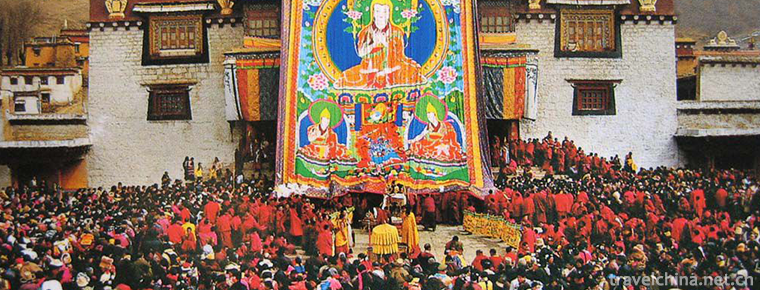
-
Sliced Fish in Hot Chili Oil
Boiled fish, also known as river boiled boiled fish and boiled fish fillet, was first popular in Cui Yun Township, Yubei District, Chongqing..
Views: 247 Time 2018-10-27 -
Fried the bait
Fried the bait/Great rescue is a famous traditional snack in Tengchong County, Yunnan Province..
Views: 237 Time 2018-11-27 -
Baoxiangsi Scenic Area
Baoxiang Temple scenic spot is located in the northwest corner of Wenshang County. It is a famous Buddhist cultural tourist resort in China. Baoxiang Temple scenic spot is a national AAAA level scenic.
Views: 102 Time 2019-01-02 -
Chaibuxi Canyon Scenic Area
Chaibuxi Canyon Scenic Area is located in the eastern part of Wufeng Tujia Autonomous County, with Wulingyuan in the South and Qingjiang River in the north. Zhangjiajie belongs to Wuling Mountains..
Views: 216 Time 2019-01-04 -
Daweishan National Forest Park
Dawei Mountain is located in the boundary between Hunan and Jiangxi Province, the hinterland of Lianyun Mountains, the East is Tonggu County under the jurisdiction of Yichun City, Jiangxi Province.
Views: 125 Time 2019-01-07 -
Yanzhi Mountain Forest Park
Yanzhi Mountain Forest Park is located 45 kilometers southeast of Shandan County. The Gejunma Grassland is opposite to Qilian Mountain.
Views: 103 Time 2019-02-28 -
Porcelain painting
Porcelain plate painting refers to a kind of planar ceramic handicraft which is manually painted and glazed with special chemical pigments on plain porcelain plate and then.
Views: 240 Time 2019-04-22 -
Dabie Mountain Folk Songs
Dabie Mountain folk song is a traditional folk song widely circulated in the west of Anhui Province. With the unique regionality of the interdependence of mountains and rivers.
Views: 247 Time 2019-04-23 -
Firing Techniques of Guangcai Porcelain
Guangcai Porcelain Firing Technology, a local traditional handicraft in Guangzhou, Guangdong Province, is one of the national intangible cultural heritages..
Views: 84 Time 2019-05-01 -
Qixian Lake
Qixian lake water resort is located in Fuxing Town, Gaoxian County, more than 40 kilometers away from Yibin City. It is the largest mountain water storage Lake in Yibin City, with a water area of 2632 Mu and a total area of more than 50 square kilometers. It was listed as a regional scenic spot in 1988 and approved as the first batch of provincial wetland park by Sichuan Provincial People's Government in 2008..
Views: 371 Time 2020-10-16 -
Chongzhou jiulonggou scenic spot
Chongzhou jiulonggou scenic spot is located in Sanlang Town, Chongzhou City, with an area of more than 170 square kilometers and 76 kilometers away from Chengdu City. Jiulonggou is known as "Dragon Palace on earth". .
Views: 304 Time 2020-11-05 -
Mount balang
Balang mountain, also known as "colorful mountain", is located between Wolong Nature Reserve and Siguniang mountain scenic area. Balang mountain is called balangla in Tibetan language. It is 5040 meters above sea level. When you look up, you can see that the mountains are covered by mountains and meadows.
Views: 129 Time 2020-11-07
